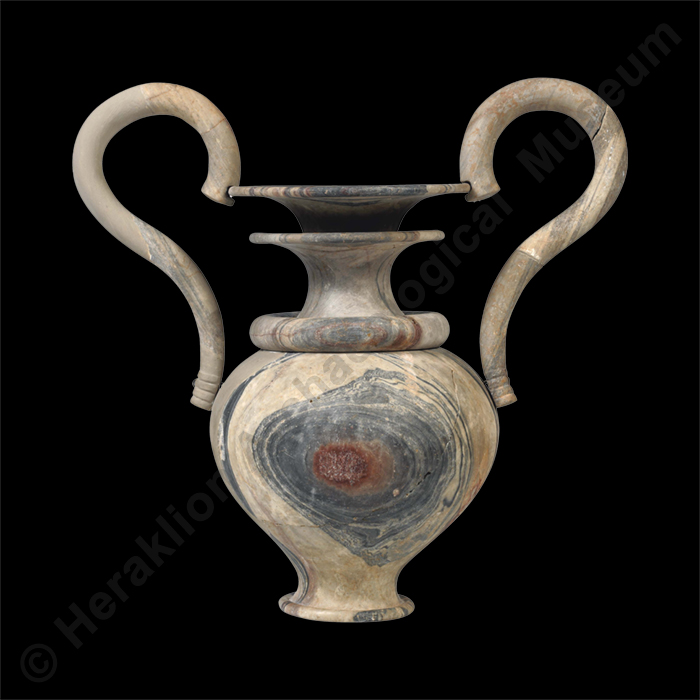The exhibit
Zakros, “Treasury of the Shrine”. 1500-1450 BC

The largest known assemblage of elaborate Minoan stone vessels was revealed in the “Treasury of the Shrine” at the Palace of Zakros, whose contents were discovered almost intact during the excavation by Nikolaos Platon. Among the most striking finds are the stone ritual vessels, including rhyta for offerings and libations to the deity, cups known as “chalices”, and this amphora of multicoloured veined limestone. This vase displays the unparalleled skill of the Minoan stone-carvers, in their ability to carve the hard material, the precision of the shape and the use of the natural veins in the stone to create a multicoloured, nearly circular design in the centre of the body. The high S-shaped handles, the two parts of the double neck, the body of the vase and the collar around the base of the neck were all made separately before being assembled. Each of these elements is also found in other vessels of the Neopalatial period, but their combination in this amphora produces a unique and distinctive shape.













